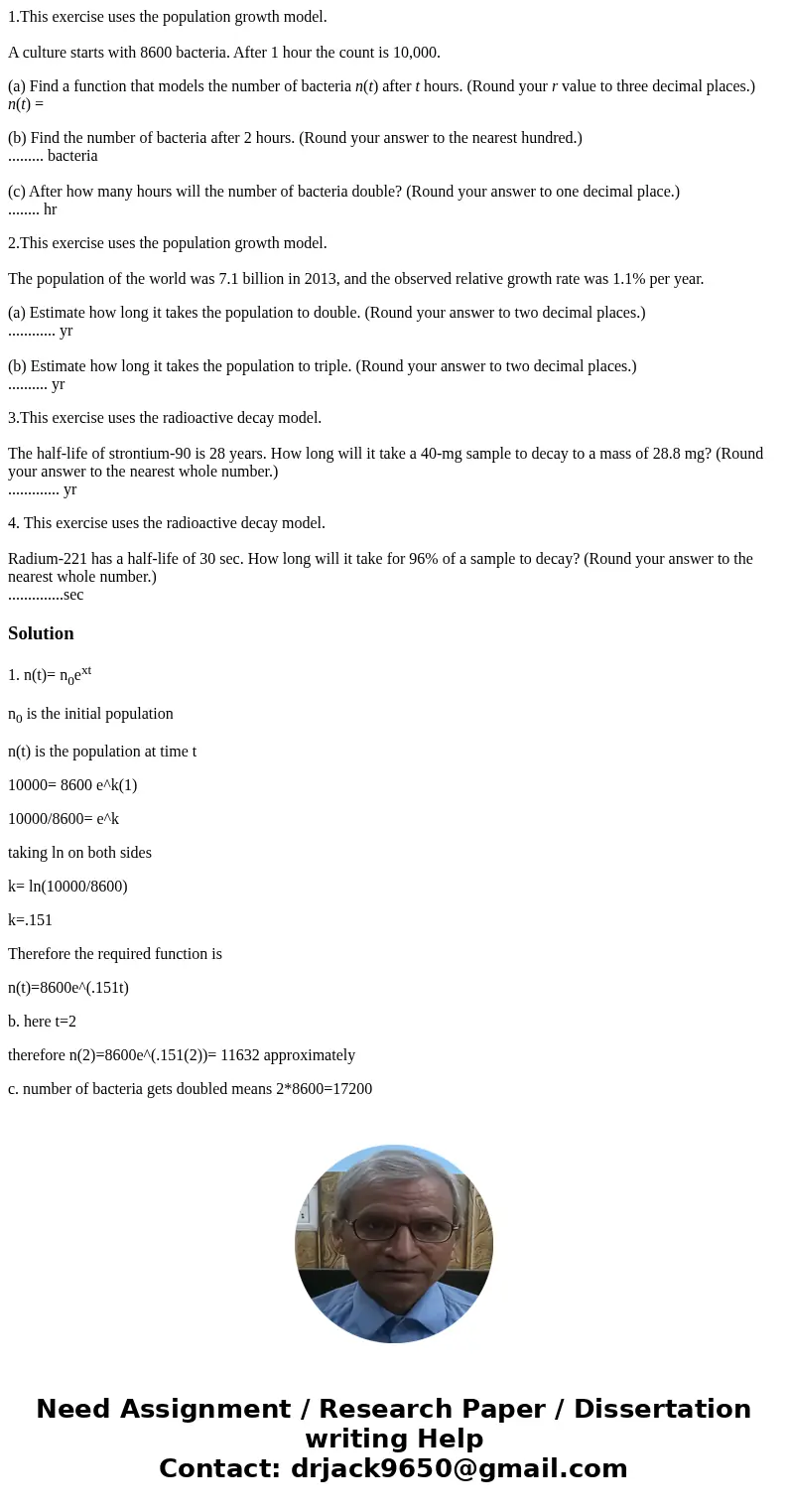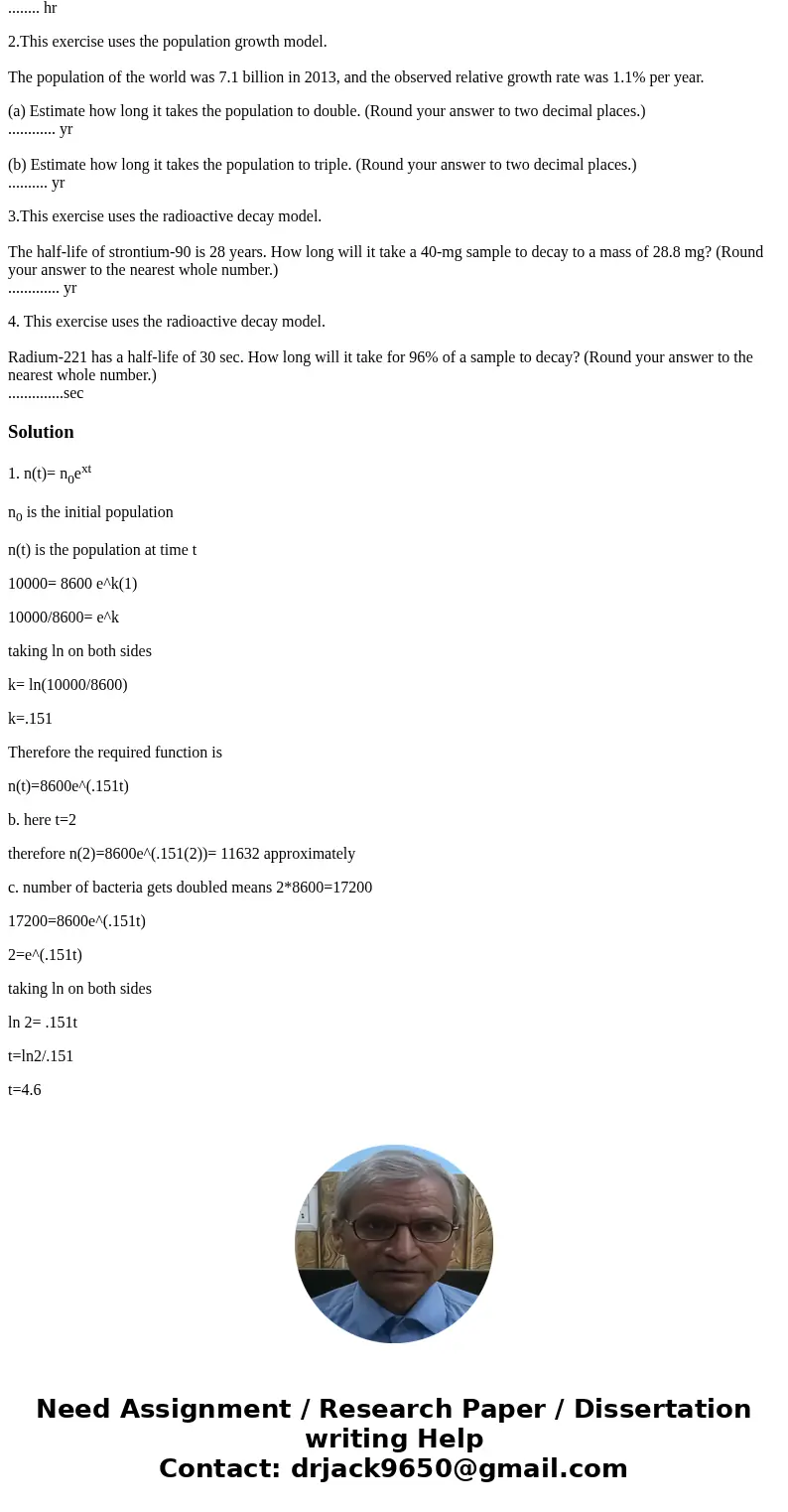1This exercise uses the population growth model A culture st
1.This exercise uses the population growth model.
A culture starts with 8600 bacteria. After 1 hour the count is 10,000.
(a) Find a function that models the number of bacteria n(t) after t hours. (Round your r value to three decimal places.)
n(t) =
(b) Find the number of bacteria after 2 hours. (Round your answer to the nearest hundred.)
......... bacteria
(c) After how many hours will the number of bacteria double? (Round your answer to one decimal place.)
........ hr
2.This exercise uses the population growth model.
The population of the world was 7.1 billion in 2013, and the observed relative growth rate was 1.1% per year.
(a) Estimate how long it takes the population to double. (Round your answer to two decimal places.)
............ yr
(b) Estimate how long it takes the population to triple. (Round your answer to two decimal places.)
.......... yr
3.This exercise uses the radioactive decay model.
The half-life of strontium-90 is 28 years. How long will it take a 40-mg sample to decay to a mass of 28.8 mg? (Round your answer to the nearest whole number.)
............. yr
4. This exercise uses the radioactive decay model.
Radium-221 has a half-life of 30 sec. How long will it take for 96% of a sample to decay? (Round your answer to the nearest whole number.)
..............sec
Solution
1. n(t)= n0ext
n0 is the initial population
n(t) is the population at time t
10000= 8600 e^k(1)
10000/8600= e^k
taking ln on both sides
k= ln(10000/8600)
k=.151
Therefore the required function is
n(t)=8600e^(.151t)
b. here t=2
therefore n(2)=8600e^(.151(2))= 11632 approximately
c. number of bacteria gets doubled means 2*8600=17200
17200=8600e^(.151t)
2=e^(.151t)
taking ln on both sides
ln 2= .151t
t=ln2/.151
t=4.6


 Homework Sourse
Homework Sourse